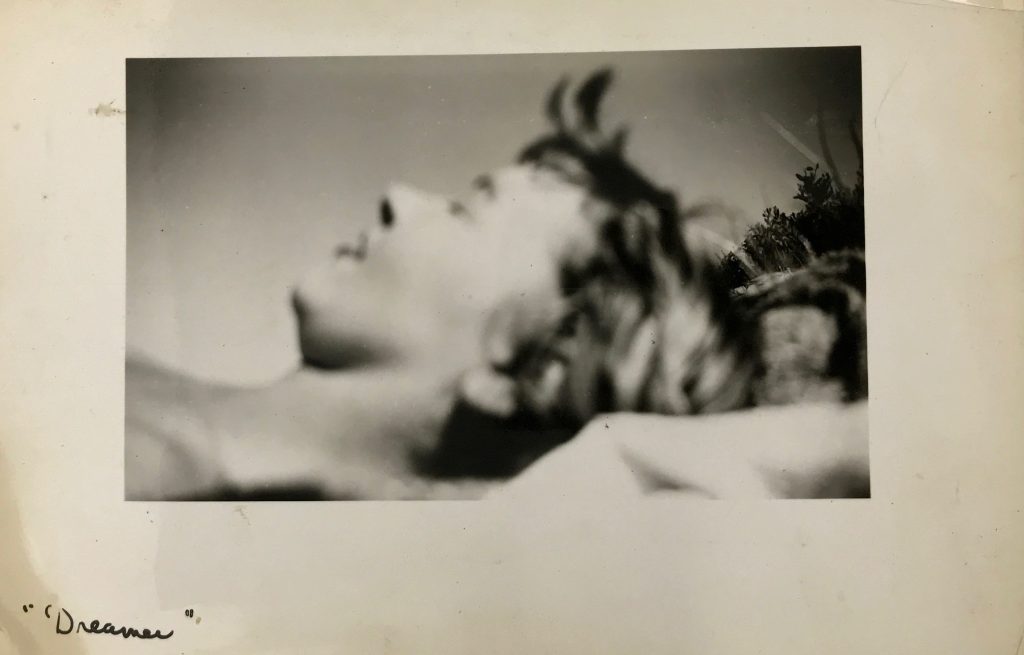
Australian artists Phyllis Paulina Waterhouse (1917–1989) and Charles William Bush (1919–1989) were life-long companions, who met as teenagers at the National Gallery of Victoria Art School in the 1930s. While Charles was a celebrated painter, official war artist, art critic, drawing teacher and media personality, the record of Phyl’s life and artistic practice is sparsely documented and far less visible. The Preservation team recently rehoused the Bush/Waterhouse Collection (YMS 16032), which includes photographs, slides, newspaper articles, diaries, correspondence and personal objects. From this extensive archive, it has been possible to glean some insight into an accomplished artist who was somewhat unconventional for her time.
Early life and childhood
Phyl’s parents, Lucy and Stuart Waterhouse, and her older siblings Charlie and Dorothy migrated from England and settled in Bacchus Marsh at the beginning of the twentieth century. The family later moved to Essendon to start a poultry farm, where Phyl was born on 17 April 1917. Early photographs show she was a keen dancer from a young age, as well as a gifted musician, especially on the piano.
At nine years old, Phyl contracted rheumatic fever, which left her with a lifelong heart murmur and severely constrained her activities. During this time she became captivated by drawing, later stating, ‘I realised this was the way I wanted to go and this was to be my life’. Phyl was encouraged by her parents, who arranged watercolour painting lessons for her at the (now demolished) Eastern Market on Bourke Street until 1932.
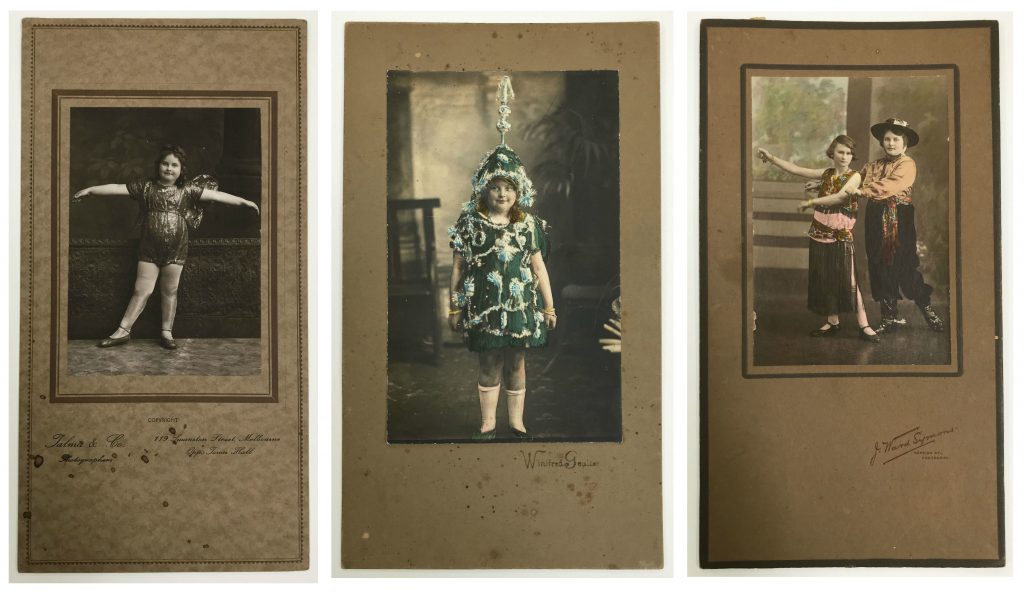
National Gallery School days
At 16 Phyl commenced studies at the National Gallery School, then located on Swanston Street in what is today State Library Victoria. It was a pivotal time that not only set the course of her life as an artist, but where she also met her life-long companion Charles Bush, who enrolled in 1934, aged 14. Phyl later described this exciting period:
Although the rats sat on the gas stove and cleaned their whiskers, we had a marvellous time … going to a true art school where the whole atmosphere was of painting and drawing … and the walls were smothered with paint and there was a wonderful tradition.
The full course took seven years and students immersed themselves, often arriving at 10 o’clock in the morning and working until 10 o’clock at night. Phyl trained under the critical eye of Bernard Hall – then the Head of the Art School – an experience that she described has having ‘put steel into my soul’.
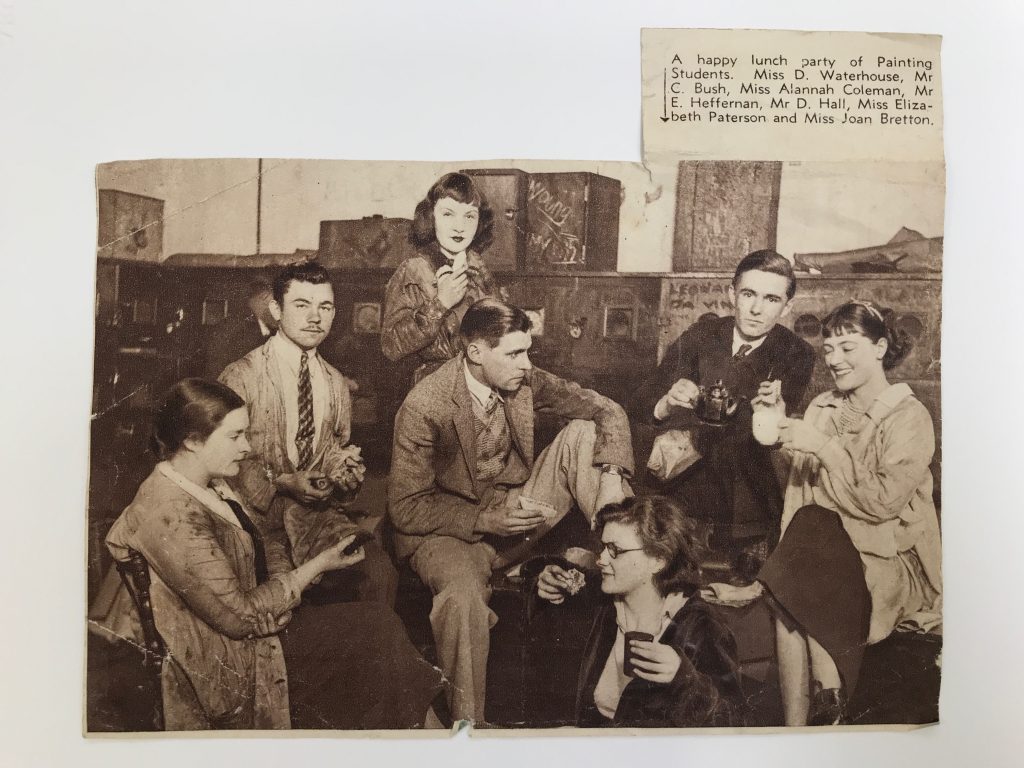
During WWII, Charles reluctantly joined the army, initially in artillery and camouflage and later as an official war artist for the Australian War Memorial, based in Timor and New Guinea. Phyl continued to exhibit every two years while working in the Military Secretary Branch. Numerous lipstick-kissed letters illustrate correspondence between Phyl and Charles during his service. Although fortunate not to lose anyone close, the war had a deep impact on Phyl and she stopped painting entirely for three years.
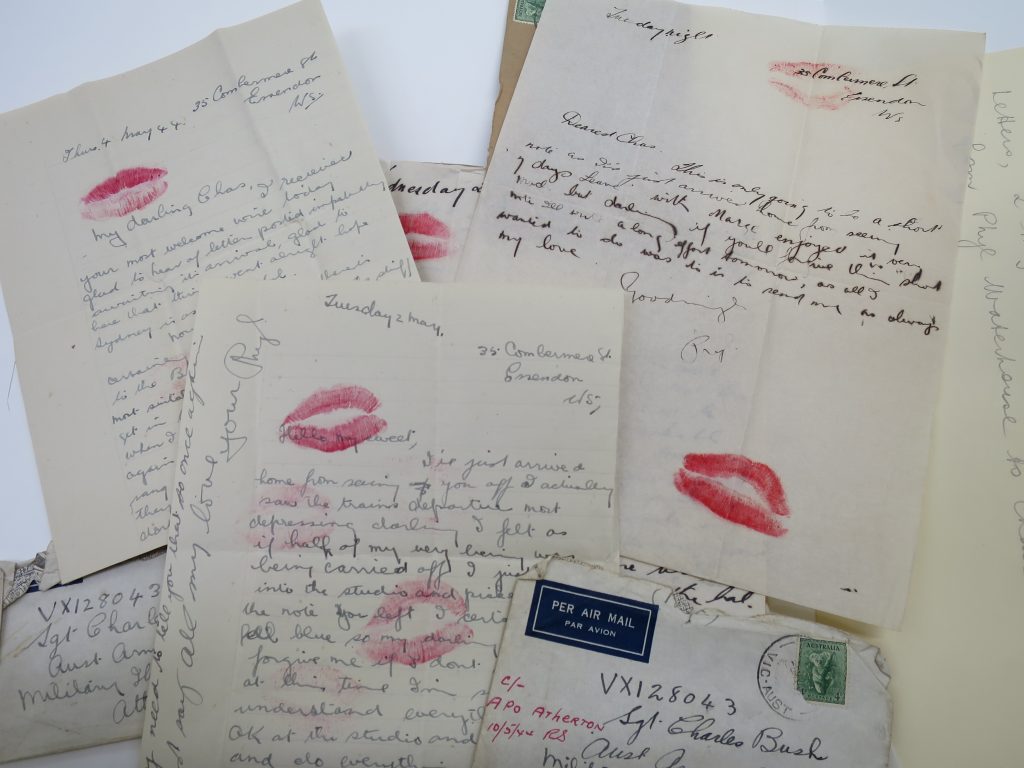
Travelling scholarship to UK
In 1949, Phyl and Charles received the Travelling Art Scholarship, a British Council Grant, which funded their travel to London in 1950–1951. The bright-eyed young artists visited exhibitions and galleries throughout the United Kingdom, France, Italy and Spain. While overseas, Phyl won the coveted Ballarat Crouch Prize for two consecutive years, 1950–1951. She also worked as a driver and trained as a telephonist at the Labor Exchange in St James.
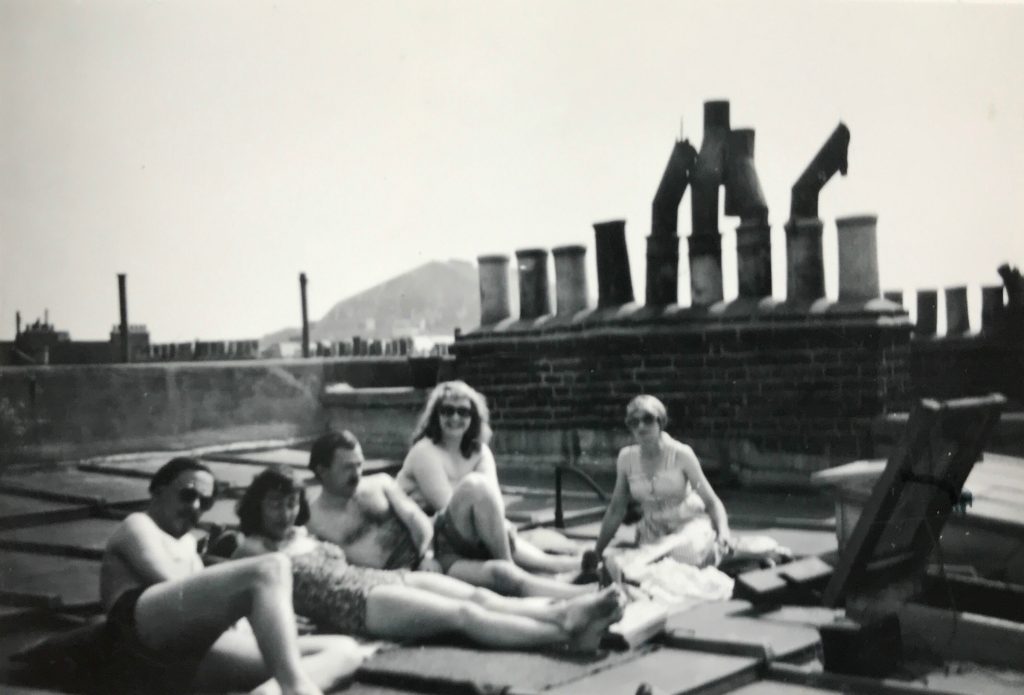
Returning in 1952, Phyl and Charles set up a studio in Essendon. Phyl initially tried to earn a living from painting alone, but the financial strain was ‘too distressing’. She took a job as a night-time switchboard operator at radio station 3AW, which allowed her to paint during the day. Phyl later explained:
I’m the sort of person I feel who had to have some sort of job in which I thought the rent was going to come in from it, and not give full time to painting. I realise this is perhaps of course a weakness, but the security of that job still enabled me to work. And I worked at night or when I could and got quite an amount done. I feel that having this security enabled me to think more clearly, but of course it’s a personal thing.
By contrast, Charles had decided in 1936 to become a full-time professional painter. This was an unusual resolution during a period when most artists resorted to teaching and painted in their spare time. Charles fulfilled his ambition, being a commercially successful full-time artist throughout his lifetime, painting numerous subjects, portraits, landscapes and murals.
Artistic practice and views on art
As a student, Phyl worked mainly from casts and life models. She later painted outdoors, although ‘strong northerly winds meant paintings often ended up face down in the sand’. Increasingly, she took sketches and notes, recording her impressions before working directly onto prepared canvas or Masonite in the studio. Phyl worked quickly and liked creating texture and overpainting to build up the surfaces of her paintings. Originally trained in a traditional realistic tonal style, when she resumed painting after the war Phyl gravitated towards the colour and harmonies of the French Impressionists.
A prolific artist, Phyl is represented in the collections of most major Australian galleries, although she arguably did not receive sufficient critical attention in her lifetime. Interviewed in 1965, her reflections on the prejudice she experienced as a female artist remain eerily pertinent:
There’s one thing, if I feel this tape is played to other generations, I do hope, if there are any women painters listening to it, that you will have got over this terrible thing of always being referred to as a ‘woman painter’. I just wish and I pray for you, that your painting is viewed as a work of art, completely irrespective of whether you’re a woman painter.

Right: Portrait of Phyl Waterhouse by Charles Bush c1958
Leveson Street Gallery
By the 1960s, the art world in Australia had become a high-powered business. Phyl was resistant:
I hate any of my work being sold with pressure methods, because I feel someone has got to love a painting and when they give out their good money for it, it’s because they love it and want to live with it and really enjoy it and not buying for investment or anything like that.
In 1962, Phyl and Charles opened the Leveson Street Gallery in North Melbourne with close friend June Davies. As one of the first artist-run galleries in Melbourne, Phyl attributed its success to its owners having ‘a feeling for the artist and his problems’.
The gallery’s financial success funded overseas travel to the United Kingdom, Russia, Italy, France, Turkey, Greece, Papua New Guinea and Australia. It also enabled the purchase of an Aireys Inlet property that would become Phyl’s haven: a place to paint, garden, cook and entertain her many friends (and cats). However, the demands of the gallery also meant less time to devote to her own art. When the gallery closed in 1979, Phyl returned to painting, but this unfortunately coincided with a decline in her health.

Right: Plaques commemorating Charles Bush and Phyl Waterhouse (not collection item)

Right: Phyl Waterhouse in her later years at Aireys Inlet, 1972 (Box 58)
Later years
The couple eloped in 1979 – Charles explained that Phyl insisted on keeping their marriage secret so as not to ‘spoil their image’. Perhaps from intuition, the ever-practical Phyl was determined to simplify their affairs should one pre-decease the other. In 1985, she reflected:
We didn’t marry, I suppose, because I wanted to be a painter and Charles was very determined to be a painter – he was wanting, you know, to follow his career and it would have been a very rugged time being married and having children … Children and marriage hasn’t been a priority, no, not at all, I wanted to be a painter.
During a late night walk at Aireys Inlet on 9 April 1989, Phyl suffered a heart attack, dying in Charles’ arms. Utterly devastated by the loss of his life partner, Charles’ health also declined rapidly and he began to grind his teeth. Charles died of a heart attack in the dentist’s chair on 13 November 1989.
Contemplating her creative life and career, it seems fitting to conclude with a final word from Phyl:
I really think it has been a most successful, happy time. Although there are times when you think, why do I do it? … I’m sure it’s a disease, if you love painting, you’re going to do it, whatever happens. You must learn to take all the knocks, and just push on with it, and following your own dictates, not jumping on bandwagons … but be true to yourself, to what you feel that you want to say, and say it as well as you can. And so now, I wish you luck, and very good painting!
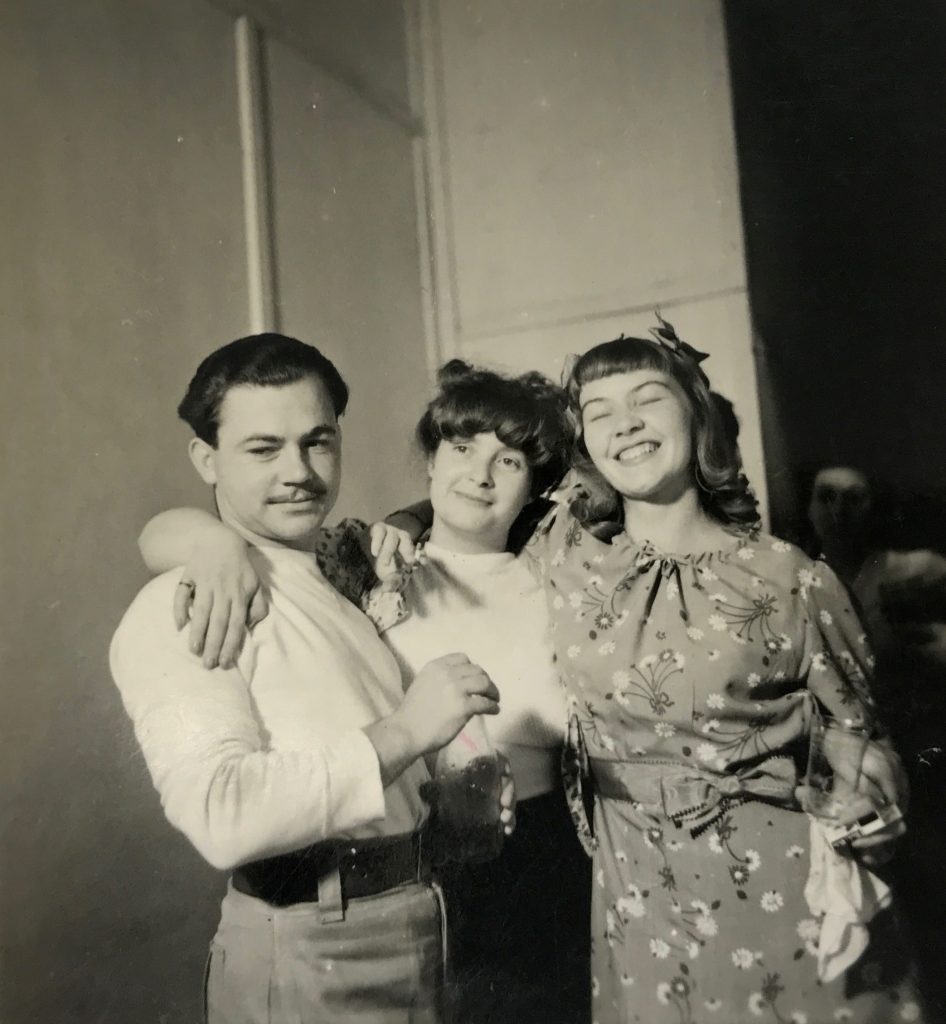
This post is written by Emily Keppel and Jessye Wdowin-McGregor from the Library’s Preservation team.
References
- All direct quotes by Phyl Waterhouse are taken from an oral history interview with Hazel de Berg in 1965, National Library of Australia Collection
- Direct quotes by Charles Bush are taken from his personal diary, 1989, (Box 13) and journal, ‘Book of remembrances of Phyl Waterhouse’, 1989, (Box 6, Folder 2) in the Bush/Waterhouse collection
- ‘We didn’t marry, I suppose…’ quote from a newspaper clipping (c.1985, date not identified) in the Bush/Waterhouse collection.

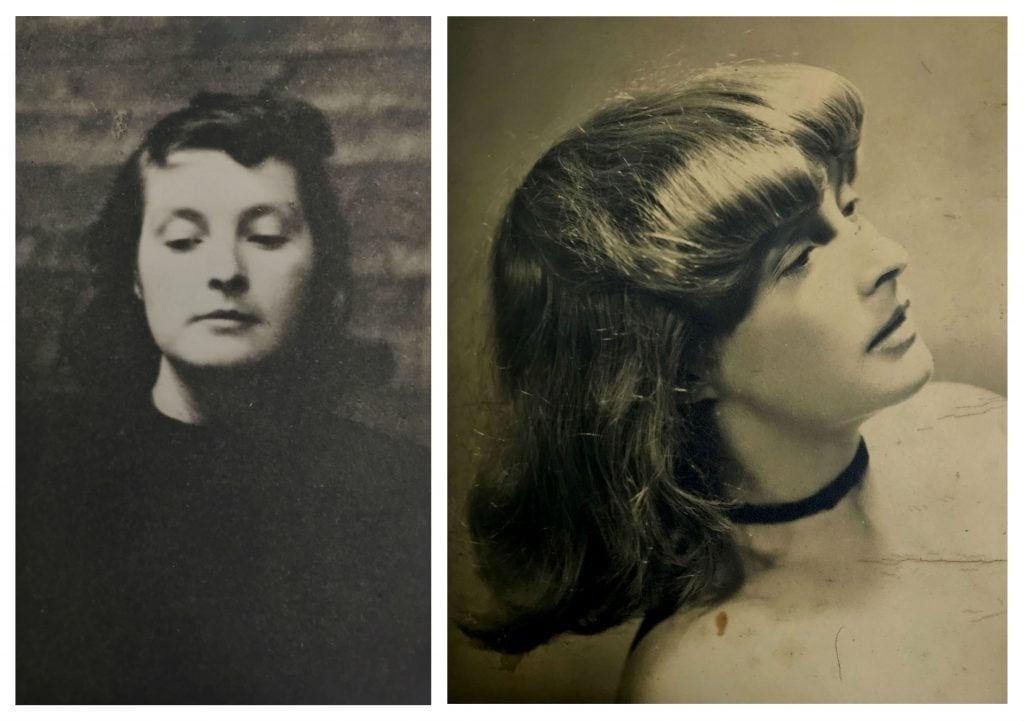
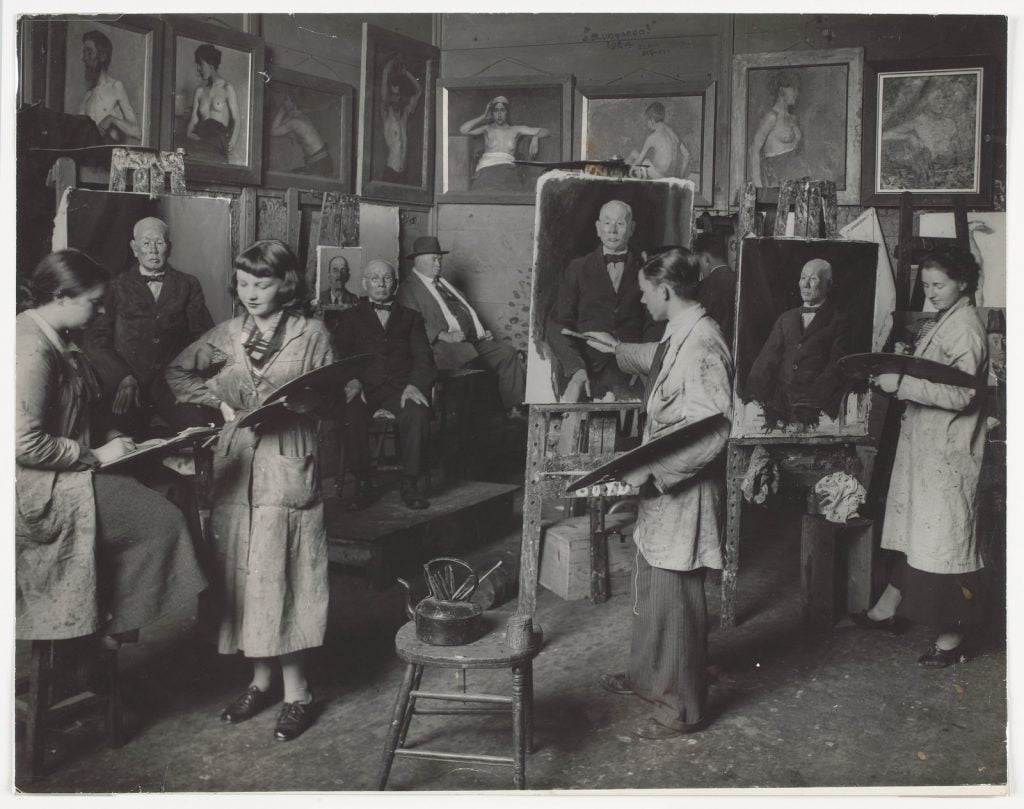
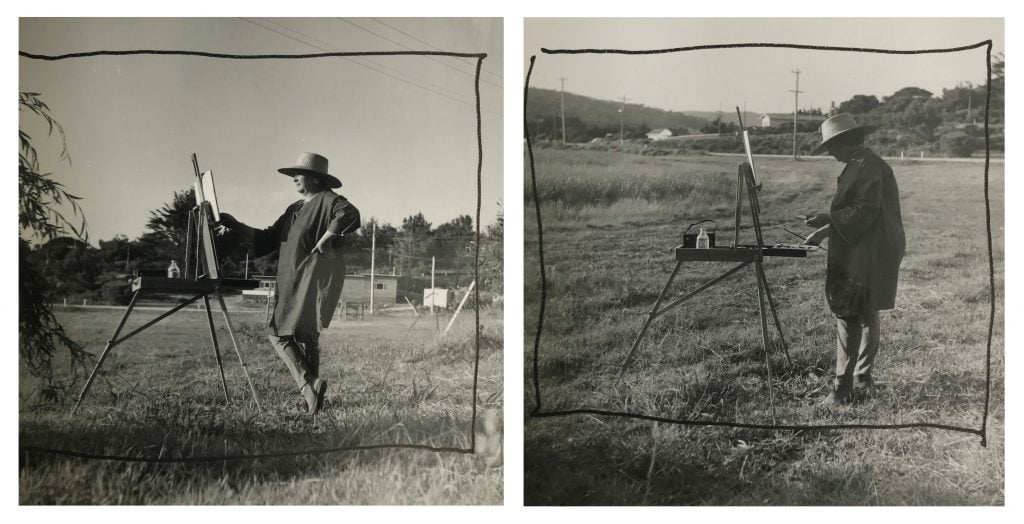

I was a 15 year old “kid” – fresh down in Melbourne from “the bush” and commenced working at The ES & A Bank, corner Queensberry and Leveson Streets, North Melbourne in the early 60’s. Charles Bush and Phil Waterhouse – and The Leveson Street Gallery – banked with us.
They were artistic, worldly, artistic and seemed to live a charmed “larger than life” existence. As a “kid from the bush” I was – quite – captivated, and loved the exotica they exuded.
It was sad to read of their deaths – and the close time linkage to both; – a trues sign of a ‘Broken Heart” ?
I quite by accident came upon this commentary and have thoroughly enjoyed reading it. Thank you.